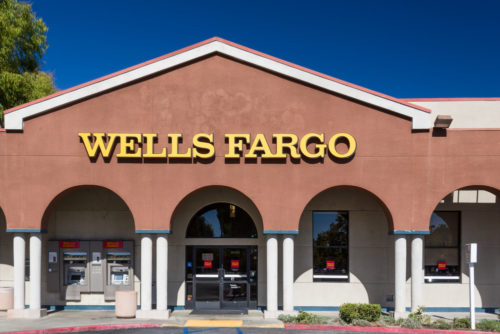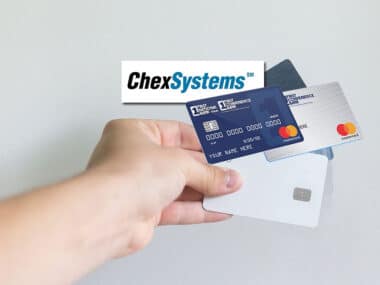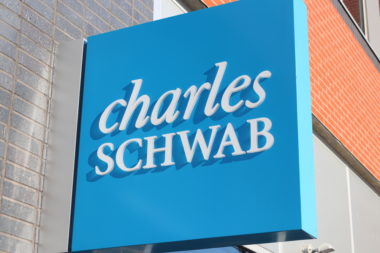Wells Fargo Bank has been around since 1852. The financial institution has survived wars, the Great Depression, and changes in banking and technology to become the third-largest bank today. Wells Fargo offers a variety of consumer and commercial banking services from 7,400 locations nationwide.
Table of Contents
Wells Fargo Financial Services
If you’re asking yourself whether Wells Fargo is a good bank, the answer depends on what you’re looking for. Before opening an account, examine the following points to decide if Wells Fargo is right for you.
ATMs
Wells Fargo Bank offers customers more than 13,000 free ATMs. Eighty-five percent of the bank’s ATMs are mobile-wallet enabled, meaning you don’t need an ATM or debit card to access one. Add your card(s) to your smartphone’s digital wallet, and you’ll have access to Wells Fargo ATM locations that display the contactless symbol.
Business Banking
Wells Fargo also provides business banking services. This could be advantageous if you’d like to handle all your business and personal banking in one place. You’ll have access to commercial services, including business checking and savings accounts, financing, and merchant processing for companies that accept credit card payments.
Fees
Depending on the type of bank account you wish to open with Wells Fargo Bank, there may be fees associated.
Here’s a closer look at Wells Fargo’s checking account fees:
- Monthly fees: No fee for a Teen Checking Account, $10 for the Opportunity and Everyday Checking Account, and $15 for Preferred Checking Accounts if you don’t maintain a $1,500 to $10,000 minimum daily balance, make at least 10 debit card purchases per month, or receive $500 to $1,000 per month or more in direct deposits;
- ATM withdrawals: Free at Wells Fargo ATMs, $2.50 at non-Wells Fargo domestic ATMs and $5.00 at international machines, plus a 3% foreign transaction fee;
- Cashier’s checks: $10 each;
- Money orders: $5 each;
- Overdraft and non-sufficient funds (NSF) fees: $35 per item;
- Overdraft protection transfer: $12.50 per item;
- Returned deposit: $12 per item;
- Stopped payments: $31 per item;
- Incoming domestic wire transfers: $15 per item;
- Incoming international wire transfers: $16 per item;
- Outgoing domestic wire transfers: $30 per item;
- Outgoing international wire transfers: Depends on the amount and currency.
Wells Fargo Bank savings account fees:
- Monthly fees: If you don’t maintain a daily balance of $300 or $3,500, you’ll be charged a $5 or $12 fee, depending on the savings account;
- Excess activity fees after the first six withdrawals: $15 per withdrawal, limited to three.
Interest Rates
You’ll earn interest on your savings and certificate of deposit (CD) accounts. The current Wells Fargo interest rates are:
- Wells Fargo Way2Save Savings: 0.01% annual percentage yield (APY);
- Platinum Savings: 0.05% APY or a bonus 0.10% APY for customers who link an eligible account;
- Special CD with a $5,000 minimum deposit: Depending on the term, 1.05% to 1.35% APY or 1.10% to 1.40% APY bonus rate for customers with a qualified linked account;
- Standard CD with a $2,500 minimum deposit: 0.05% to 0.20%, depending on deposit amount and term length or 0.10% to 0.25% bonus rate for customers with a qualified linked account;
- Step Rate CD with a $2,500 minimum deposit: 1.06% APY for 24 months or a 1.11% APY bonus rate for customers with a qualified linked account.
Loans
Wells Fargo offers:
- Auto loans;
- Home equity lines of credit;
- Personal loans;
- Student loans.
Mobile App
Use the Wells Fargo mobile app to do your banking while you’re on the go. Link your cards, and you can use your smartphone in place of your ATM, debit, or credit cards to make purchases or withdrawals at stores and Wells Fargo ATM locations that accept contactless cards.
For security, you can use the mobile banking app’s fingerprint or facial recognition features to authenticate your account. Pay bills, transfer money, review your bank transactions, or deposit checks from your smartphone or tablet.
Refinancing
Wells Fargo is the largest mortgage loan issuer and also provides mortgage refinancing. You can apply for refinancing online using the bank’s simplified application process to make the process easier.
Retirement Services
If you’re planning for your retirement, Wells Fargo’s online retirement planning resources are a good place to get started to learn more about your options. Wells Fargo’s retirement and investment services provide IRAs, annuities, 401(k)s, and tax management for clients.
Student Checking
Wells Fargo offers checking accounts for teens and students. Wells Fargo waives the monthly service fee on the Everyday Checking account for 17 to 24-year-old account owners.
Pros of Wells Fargo
One of the most effective ways to choose the best bank for your needs is by comparing several banks and weighing each institution’s pros and cons. Here are the most significant advantages of banking with Wells Fargo:
- Higher interest rates on savings accounts and CDs with high balances;
- Free online banking;
- Free money transfers;
- Financial services for all life stages from college, to buying your first home, to retirement;
- Financially sound bank with a long history;
- A large network of branches and free ATMs.
Cons of Wells Fargo
Although Wells Fargo offers a wide range of financial services, the bank may not be the best choice for all individuals. Some drawbacks to banking with Well Fargo include:
- Low interest rates when compared to online high-yield accounts;
- High overdraft fees of $35 per item plus a possible overdraft transfer fee of $12.50 per transaction;
- Monthly service fees unless you manage to keep a higher daily balance, receive a minimum amount in monthly direct deposits, or make a minimum amount of purchases with your linked debit card;
- Trouble with the law after fraudulent practices came to light. Bank employees under pressure to cross-sell issued customers unauthorized credit cards. Wells Fargo agreed to refund customers roughly $2.6 million and was fined $185 million.
For Whom Does Wells Fargo Work Best?
Wells Fargo would benefit the traditional banking consumer most. The bank is geared toward customers who prefer to visit a branch location and do all their personal, business, and investment banking in one place. Customers looking for better interest rates on their savings and lower fees should consider other alternatives such as credit unions or online banks.
Image Source: https://depositphotos.com/





